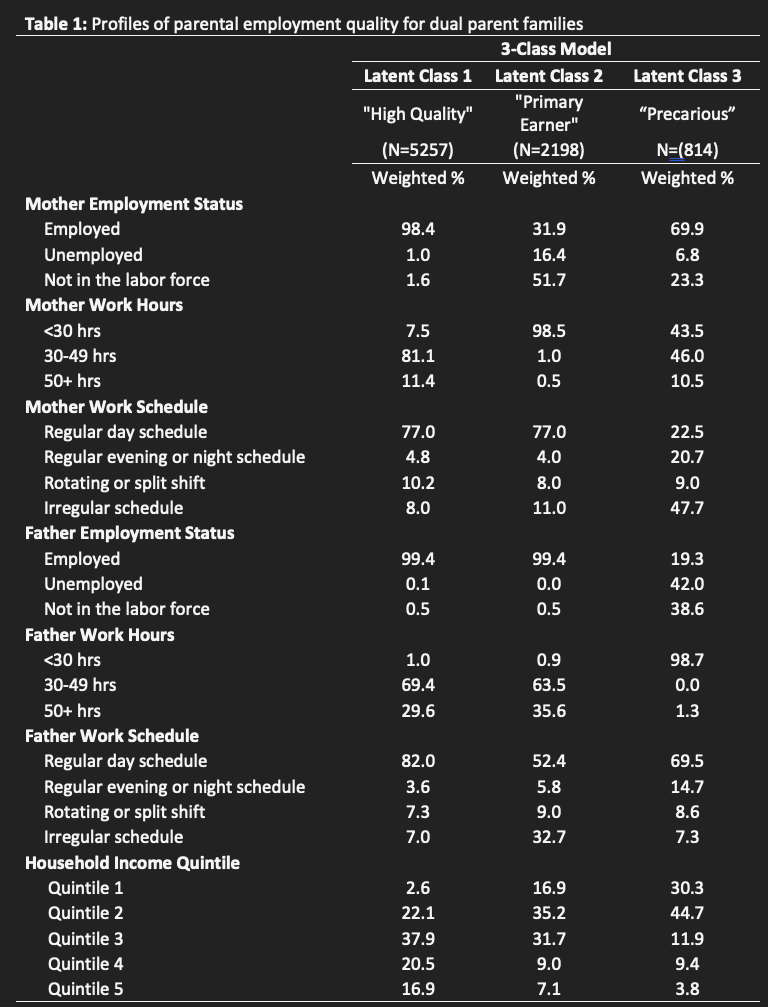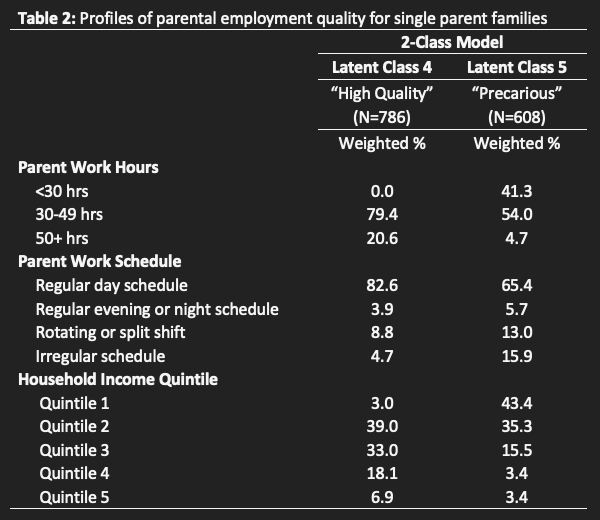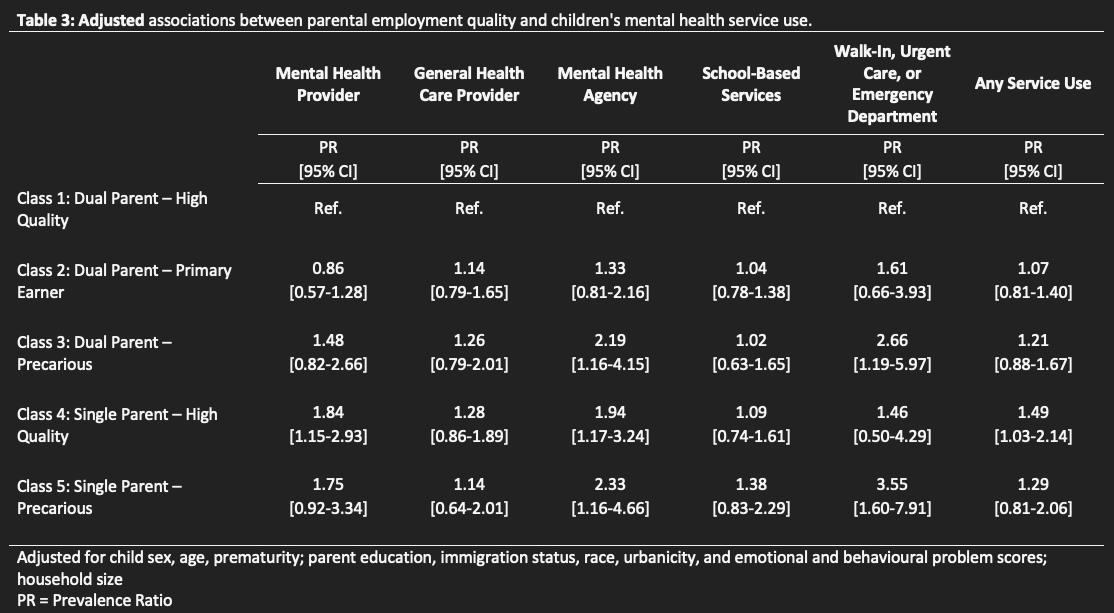Health Equity/Social Determinants of Health 11
Session: Health Equity/Social Determinants of Health 11
222 - The Role of Parental Employment Quality in Child Mental Health Service Use
Monday, April 28, 2025
7:00am - 9:15am HST
Publication Number: 222.6692
Jordan Edwards, Hamilton Health Sciences, Hamilton, ON, Canada; Faraz V. Shahidi, Institute for Work & Health, Toronto, ON, Canada; Li Wang, McMaster University, Hamilton, ON, Canada; Jinette Comeau, King's University College at Western University, London, ON, Canada; Gita Wahi, McMaster University, Hamilton, ON, Canada; Kathy Georgiades, McMaster University, Ancaster, ON, Canada; Anne E. Fuller, McMaster University, Hamilton, ON, Canada; Arjumand Siddiqi, The Hospital for Sick Children, Toronto, ON, Canada
- JE
Jordan Edwards, PhD (he/him/his)
Research Associate
Hamilton Health Sciences
Hamilton, Ontario, Canada
Presenting Author(s)
Background: Child development and health is negatively impacted by low socioeconomic status, which is determined in large part by parental employment quality (e.g., scheduling, stability, and wages). Our team recently identified lower parental employment quality was associated with higher levels of child mental health symptoms. Here, we examine whether this relationship is partially attributable to the impact of parental job quality on the ability of children and youth to access mental health services.
Objective: To measure associations between profiles of parental employment quality and child and youth mental health service use.
Design/Methods: A total of 10,802 children and youth ages 4-17 participated in a representative cross-sectional survey in Ontario, Canada, the 2014 Ontario Child Health Study (OCHS). Mental health service use was assessed by asking parents about child contacts to various providers for mental health related concerns over the past 6-months. Child mental health needs were measured using the OCHS Emotional Behavioural Scales. Parental employment profiles were established using latent class analysis according to indicators of employment status, hours, stability, and income. Analyses were conducted separately for dual and single parent households. Binomial regression analyses assessed the association between parental employment quality and child mental health service use adjusting for sociodemographic and child mental health need.
Results: We identified three classes of parental employment quality among dual parent households: high quality (dual working, high-income); primary earner (one primarily working, moderate-income); and precarious (dual intermittent, low-income) (see Table 1). We identified two classes among single parent households: high quality (moderate-income); and precarious (low-income) (see Table 2). Compared to children in dual parent high quality employment households, children in households with precarious employment were significantly more likely to access walk-in and emergency department settings for mental health related concerns (dual parent (Prevalence Ratio (PR):2.66, 95%CI:1.19, 5.97), single parent (PR:3.55, 95%CI:1.60, 7.91)) (See Table 3). These families were also more likely to receive care from publicly funded mental health agencies.
Conclusion(s): Precarious parental employment was associated with elevated walk-in, emergency, and mental health agency service use after adjusting for need. Our findings may reflect inequities in access to ongoing non-acute mental health services for families who have precarious employment.
Table 1
 Profiles of parental employment quality for dual parent families
Profiles of parental employment quality for dual parent familiesTable 2
 Profiles of parental employment quality for single parent families
Profiles of parental employment quality for single parent familiesTable 3
 Adjusted associations between parental employment quality and children's mental health service use.
Adjusted associations between parental employment quality and children's mental health service use.
